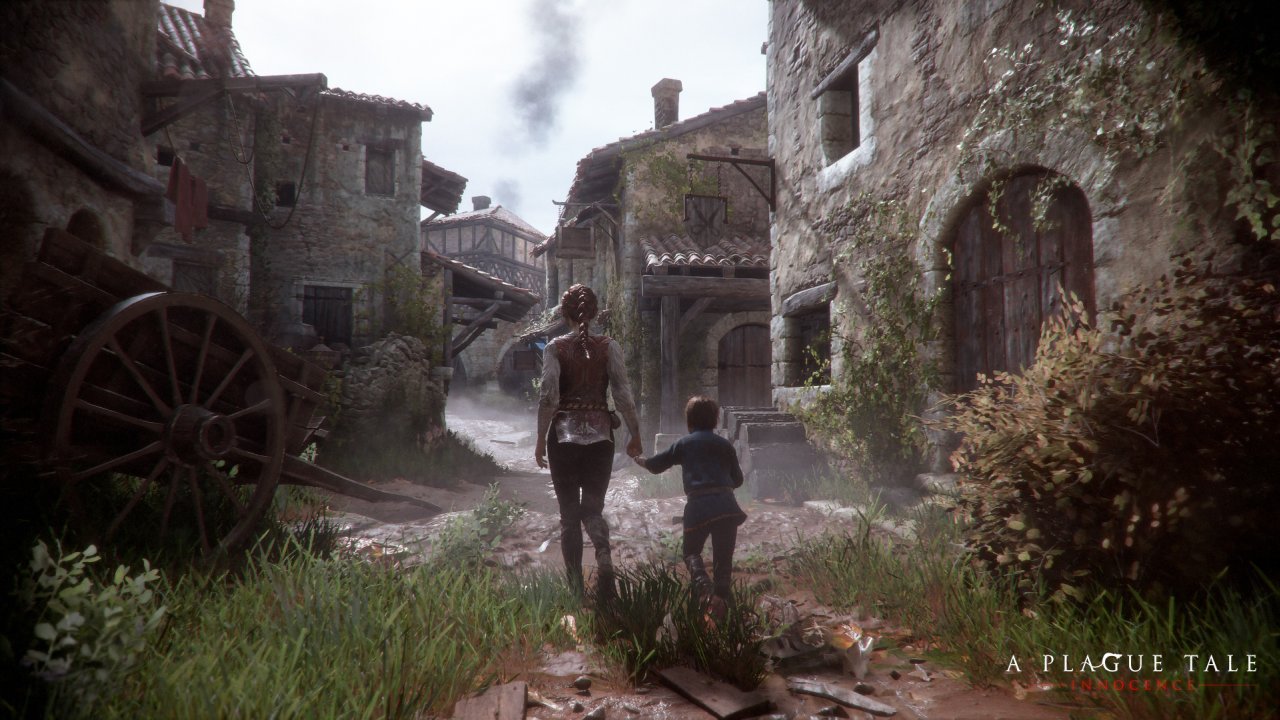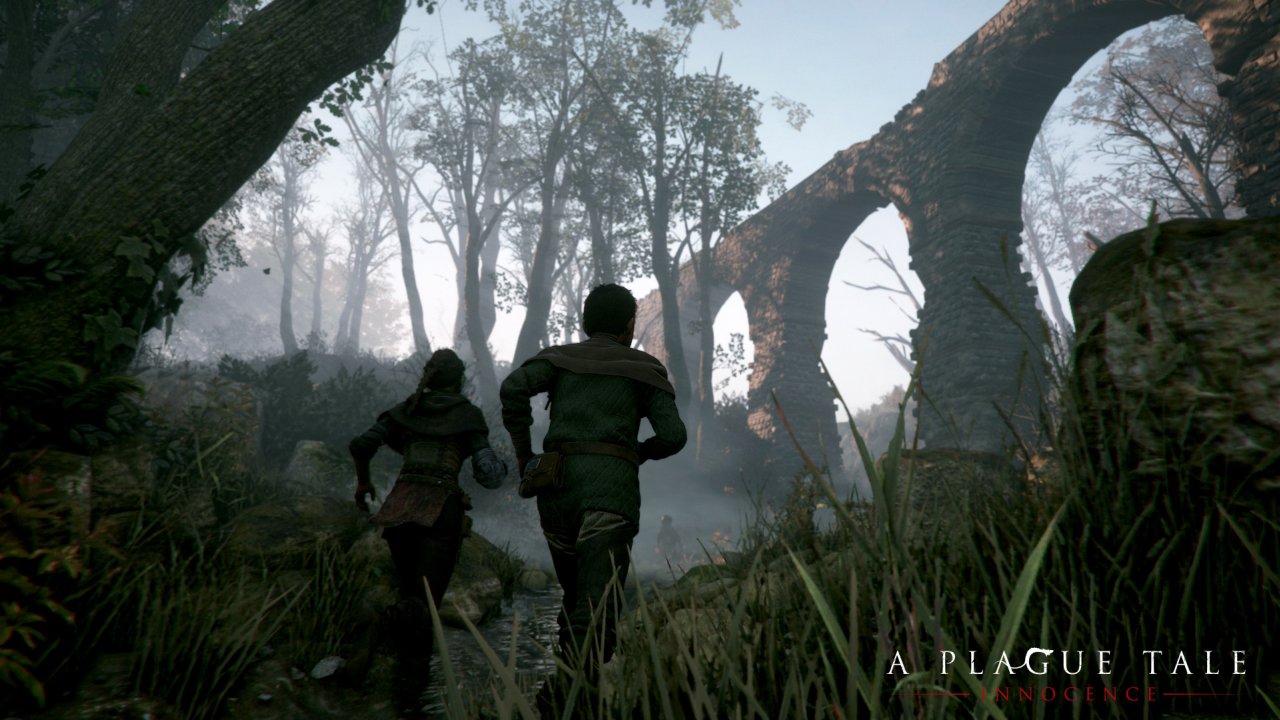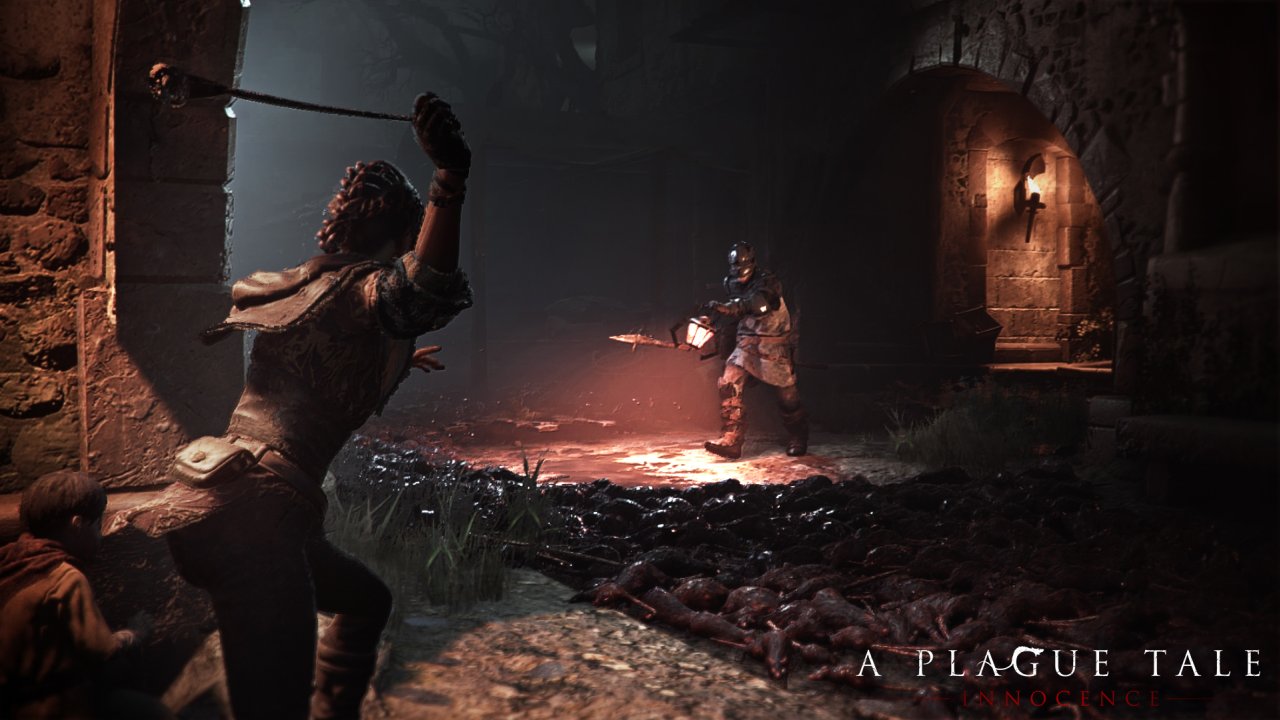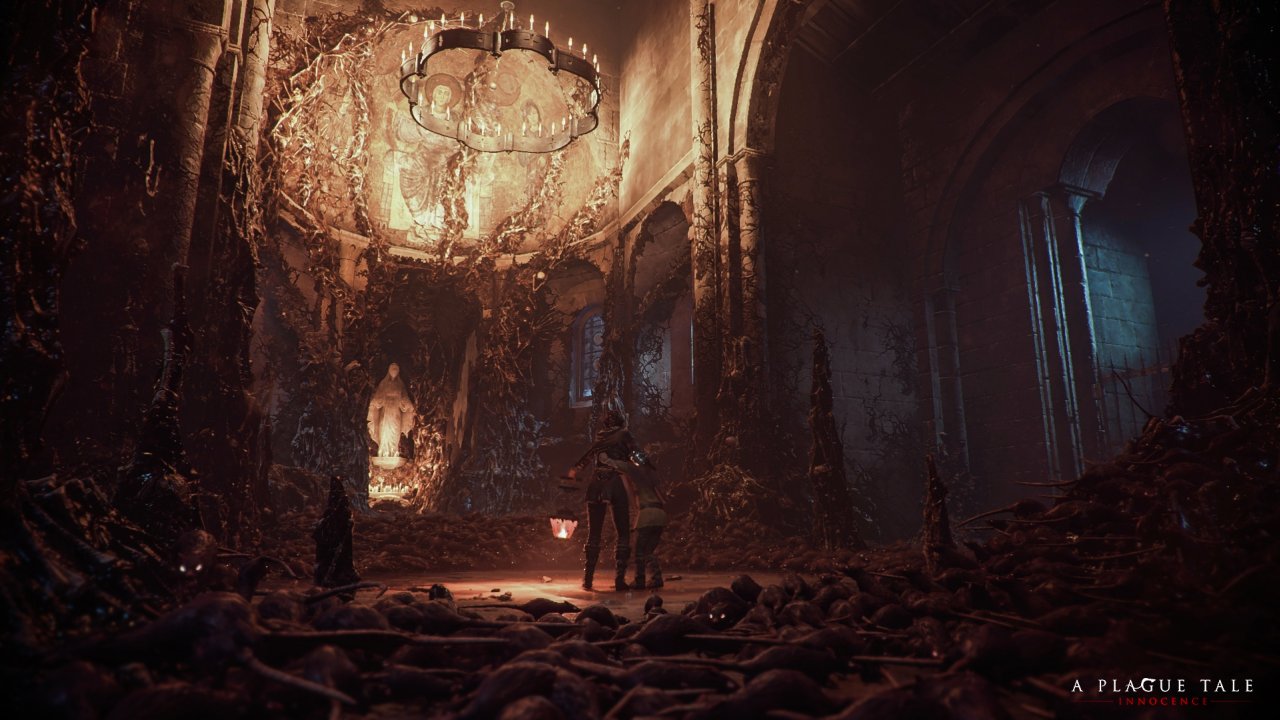A Plague Tale: Innocence Review
It’s so hard to say what you’re supposed to expect from a development studio responsible for putting out licensed Pixar games, spearheading a previous-generation port of Ubisoft’s The Crew, and supplementing the development work on Microsoft’s ReCore. You’d be forgiven for not guessing that their next project would end up being A Plague Tale: Innocence – a third-person puzzle-solving period piece that takes place during the Black Death in 14th century France. It’s foreboding, melancholic, and often grotesque – characteristics that may seem twisted given their connection to the studio’s previous efforts like the Ratatouille video game. That being said, it’s all the more impressive that Asobo Studio pulled such a risky idea off so well – it’s a unique adventure through a series of unenviable circumstances that’s often riveting to witness. This Plague Tale isn’t absent of issues, but the good bits easily justify this foray into a disheartening time in history.

A Plague Tale has a simple setup that lays an effective groundwork for the game’s disparate destinations and staggering spectacles. You play as the adolescent Amicia who has to lead her younger brother Hugo away from the malicious Inquisition while also trying to pinpoint a cure for his mysterious ailments. The arduous journey takes you through swarms of carnivorous rats, musty caves, devastated townships, and tranquil forests that avoid the stereotypically drab depictions of France’s plague-ravaged countrysides. There are still locations that contain an overwhelming amount of colorless browns and muted hues, but there are also plenty of locales that aren’t afraid to show some vibrancy, which keeps the historical setting from growing stale. The variety on display is immensely welcome and especially impressive given that the somber tone remains intact throughout an entire playthrough regardless of whether you’re navigating an urban borough or rural landscape.
The gameplay is noticeably less unique as it borrows heavily from many of the action-adventure mainstays, and its simple mechanics are rarely given a chance to shine. This is essentially what you’d get if you took Naughty Dog’s The Last of Us and stripped out the platforming, climbing, and most of the shooting. It’s a linear A to B adventure with a few hidden paths that offer collectible goodies. The bulk of your time is spent solving environmental puzzles to avoid the frequent swarms of ravenous rats and sneaking around enemies to avoid fatal confrontations. Your arsenal includes a sling and craftable items that can be hurled at any variety of things to open the path forward. The third-person aim assist is so generous that you’ll hardly have to touch the right stick, so the challenge comes from figuring out which of your tools to use in any given situation. Most scenarios have an egregiously obvious solution: throw a conveniently-placed pot to distract a guard, light a torch to deter a swarm of rats, or push a cart into place to reach a new area. All of this has been done before, but there are a couple of open-ended stealth sequences that give you a taste of the game’s potential for enticing experimentation. There are a few enemy encounters that require you to improvise with the tools you have at your disposal or make clever use of the rat swarms to dispatch or deter encroaching foes, and they result in compelling scraps for survival that test your ingenuity. It’s a shame that there weren’t more of them, as the bulk of A Plague Tale is wearily straightforward.
The controls work well most of the time. With the exception of sprint being bound to R2, the button mappings are intuitive and will be instantly recognizable to anyone familiar with modern third-person action-adventure control schemes. It even utilizes an equipment wheel that allows you to equip different projectiles and craft additional ammunition on the spot with ease, and picking up any of the game’s materials is a mere button press away. Frustration begins to seep in when you try aiming and quickly changing targets. As mentioned earlier, there is an especially aggressive aim-assist in effect that cannot be turned off. You’ll frequently find your cursor stuck on things you don’t want to be aiming at in more frantic situations. Movement can also be frustratingly imprecise in certain scenarios. Stepping in the wrong spot can cause your immediate demise if there’s a swarm of rats around, so an accidental press of the dodge button can send you back to the last checkpoint a dozen or so minutes back.

A Plague Tale also boasts a craftable upgrade system that amply incentivizes exploration. You’ll frequently encounter materials throughout your journey that can be combined to enhance Alicia’s capabilities. There are an impressive number of things to improve: carrying capacity, sling speed, item effectiveness, and even the act of upgrading itself can be upgraded to allow for enhancement of your equipment while away from workbenches. It’s a simple system and some upgrades are far superior to others, but scouring your environment for materials makes exploration far more worthwhile than it would be with the more typical throwaway collectibles. It also leads to small moments of triumph when you find a hidden path that contains the last leather you needed to make your sling more silent.
While A Plague Tale’s gameplay mechanics are simple and straightforward, the game’s marketing materials are quick to highlight the sibling-centered narrative. It does take a bit to hit its stride, and the second half is notably more compelling than the first; but the staggering setpieces that occur throughout make this tale worth your time. The plot is kept simple so that most of the focus can be placed on the characters and their environment. The playable protagonist Amicia consistently demonstrates a steadfast conviction, and her younger brother Hugo frequently exhibits wide-eyed curiosity and innocence that makes them immediately likable. A few other characters tag along during the expedition, and they provide enough flavor to keep things moving along at a serviceable pace. None of the characters are very multifaceted, but seeing them interact and their relationships develop over the course of the narrative provide the player with reason enough to see the game’s events through to the end. Things do ramp up in dramatic fashion, and the last few chapters provide a climactic and satisfying conclusion to the several hours-long experience. If you’re willing to overlook a few contrived clichés and conveniences, there’s a lot to love in the plot’s string of otherwise unthinkable situations.
The game’s cast of characters is elevated by a voice cast that does a splendid job. There are a wide range of emotions squeezed out of this limited cast of characters – fear, excitement, despair, anger, determination, and everything in between can be heard in the subtle intonations of the game’s dialogue. A few one-off NPC’s didn’t see the same first-rate treatment and some back and forth interactions have noticeable pauses, but all the members of the main cast do a great job with their line delivery. Hugo’s voice actor is a particular standout as it’s a surprisingly believable child performance. There is a lot of dialogue throughout this story-driven adventure, and it all maintains a consistent level of quality.

On a similar note, A Plague Tale’s sound and music design are exceedingly excellent. The many background sounds flesh out the game’s environments: the sharp shrieks of rat hordes are blood-churning, the metal clangs of enemy armor are suitably imposing, and the far-off cries for help from helpless plague victims are unsettling. Regardless of whether you’re in a cramped cave or wooded wilderness, every soundscape feels starkly true to life. Even the crackle of a lit torch and the ominous caws of a crow flying overhead go a long way in giving each location a satisfying sense of tangibility. The gameplay is also accompanied by a clever use of sound effects. The presence of certain types of enemies are telegraphed with musical motifs, and being spotted is accompanied by a startling stinger. The strings-heavy soundtrack is also remarkable – the main theme is fittingly foreboding, and each track feels right at home in this gloomy and near-apocalyptic setting. A Plague Tale certainly sounds the part.
On the other hand, the visuals don’t always exhibit the highest levels of quality. While this release has an MSRP $15 less than the typical AAA heavy hitters, there is a noticeable lack of finer detail. Textures are frequently muddled, character animations aren’t ridiculously detailed, many objects suffer from low-quality meshes, and some skyboxes look a bit too flat. That being said, the title still manages to look stunning in certain circumstances. There are thousands of rats on screen at times that all dynamically react to your movements and swarm together in beautifully grotesque fashion. In broader strokes, A Plague Tale can look quite striking, and the base PS4 maintains a steady framerate with only a few minor drops in fleeting sequences.
One of the most inevitably divisive characteristics of A Plague Tale is how it plays fast and loose with realism in a way that will undoubtedly be a turn-off for those seeking strict historical accuracy. It’s historical fiction in the sense that its setting is based on a very real time and place, namely the devastating intersection of the Great Plague and the Hundred Years’ War that took the lives of many millions of people. There are plenty of factual inaccuracies and aspects that require significant suspension of disbelief to reconcile: the swarms of rats swell like ocean waves, the enemy AI is completely brainless, and buildings are structured in such a way to allow for stealthy maneuverability. There are plenty of other little things that sap away the game’s plausibility, but it’s still easy to appreciate the creative liberties that were taken. It’s hard to conceptualize how A Plague Tale could’ve been as fun or compelling without them. The fluid waves of rats are far more intimidating than a small swarm would be, the ignorant AI is a lot of fun to toy with, and the level design problem is one it shares with nearly every video game in existence. It may not be historically accurate to the T, but A Plague Tale successfully strikes a fine balance between believability and bombast to provide enough room for impactful surprises and interesting gameplay sequences.

Taken as a whole, A Plague Tale: Innocence is an abundantly pleasant surprise. It’s a legitimately compelling adventure with a bevy of flaws, but it does more with its historical setting than many ever attempt to. The core gameplay isn’t the main draw here, but its tried and tested mechanics allow you to quickly solve the simple puzzles and get back to experiencing the game’s many awe-inspiring sequences and basking in desolate 14th century France. It isn’t very flashy and its replay value is limited, but those willing to overlook its shortcomings will be met with a veritable smorgasbord of standout sequences.
